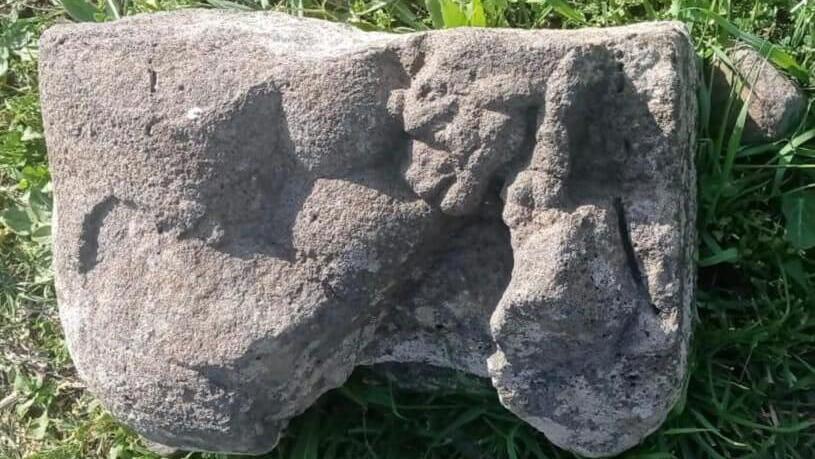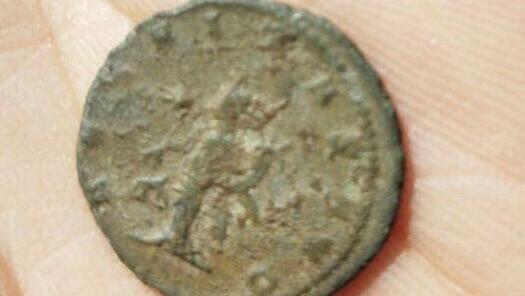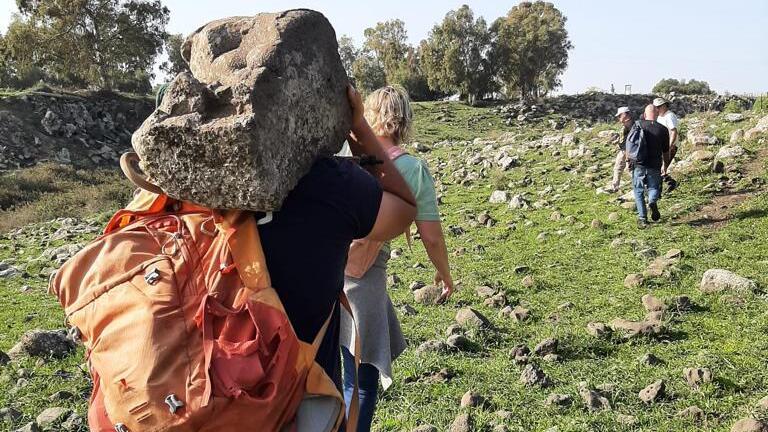Two Israeli university students recently uncovered a rare, 3rd century mural carved into a stone while on a study trip to the Golan Heights.
The students from Kinneret College, located on the southern shores of the Sea of Galilee in northern Israel, discover the mural, which depicts a lioness feeding a cub.
The college's Land of Israel Studies department gives tours of many archeological sites in Israel to its students. One of which, headed by Prof. Motti Aviam, was dedicated to the study on the ancient Jewish settlement in the Golan Heights in the archeological site of Ein Nashot.
Aviam first brought his students to the Majdolia excavation site, supervised by another lecturer in the same department, Dr. Michael Osband. During the tour, one of the students in the group located a well-preserved Roman coin depicting emperor Gallienus dating to the 3rd century.
Later in the day, the group arrived at a site of an ancient synagogue excavated in a dig headed by Dr. Zvi Uri Maoz, where the students were allowed to tour on their own. After reconvening, two of the students - Tzvia Dahan and Michael Benish - saw a stone with a mural carved onto to it.
Out of fears of the stone being stolen if left alone, Prof. Aviam decided to move the hefty obsidian stone with the help of the students while reporting the find to the Israel Antiquities Authority (IAA).
The IAA alerted the archeologist in charge of the digs in the area, Zviki Badihi, about the mural. Bahidi then instructed for the stone to be moved to Kinneret College for safekeeping.
The mural – which remained well preserved – is not the only one depicting lions found in the area, as other statues of similar animals were found in ancient synagogues throughout the Golan Heights.
According to Prof. Aviam, higher education should involve physical and theoretical approaches in order to locate similar antiquities. "Understanding the historical and archeological context while gaining experience in digs is important and should be done in cooperation with the proper authorities."




